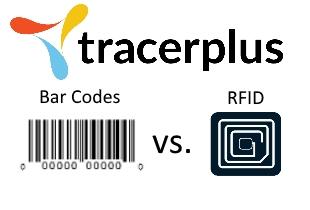Bar Codes or RFID? Which One Should I Choose?

If you’re in the warehouse/manufacturing industries, then you’ve probably wondered if embracing RFID is a good idea for your company. While bar codes offer a lot of advantages and have certainly proven their worth, newer RFID technology also comes with a lot of benefits. Here are some of the important differences between bar codes and RFID tags:
- RFID readers do not require a direct line of sight to either passive or active RFID tags, while bar code readers do require a direct line of sight to printed bar codes.
- RFID tags can be read at greater distances (up to 300 feet). Bar code readers typically max out around 15-30 feet.
- RFID readers can read tags much faster—around rates of forty or more per second. Bar codes may take a half second or so to read because direct sight is required to successfully complete a read.
- Bar codes are also limited in their reusability and ruggedness due to line of sight requirements. Because line of sight is required, the printed bar code must be exposed on the outside of the product, where it is susceptible to wear and tear. RFID tags are usually more rugged because their electronic components are covered and protected by a plastic cover.
- For a “negative” aspect, RFID tags are typically more expensive than barcodes, and much more so in some cases.
- RFID tags can act as read/write devices, with the RFID reader communicating with the tag and having the ability to alter as much of the data as the tag design will allow. Bar codes have no read/write capability.
Have we piqued your interest in RFID tags? If so, we’d love to Answer any questions you may have about this technology. Our TracerPlus Mobile Barcode Software is Barcode and RFID enabled for all your data collection needs.
